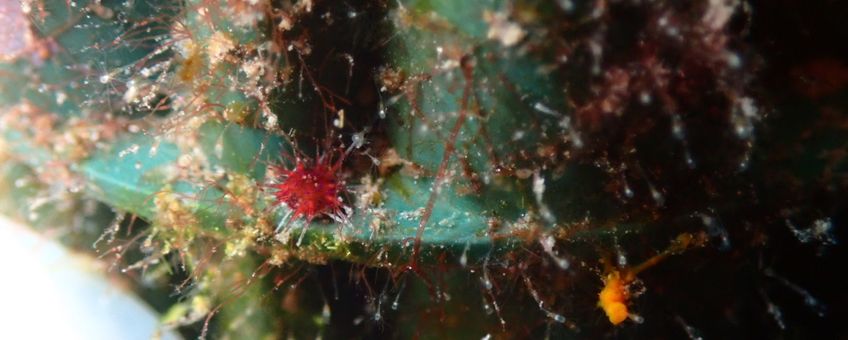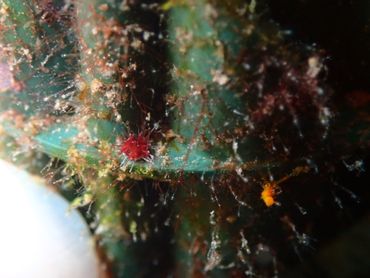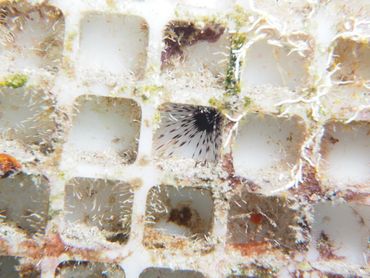
New study aids in sea urchin restoration efforts
Dutch Caribbean Nature Alliance (DCNA), Van Hall LarensteinLong-spined sea urchins (Diadema antillarum) play a critical role in maintaining healthy coral reefs. They help sustain the delicate balance within the reef by grazing on algae, which are the main competitors of corals. Unfortunately, in the mid 1980s, a disease swept through the Caribbean, wiping out nearly the entire sea urchin population. Soon after, reports of rapid algae growth were documented throughout the Caribbean. The algae occupy all available space, preventing coral recruitment and limiting the coral reef’s ability to recover from other disturbances. So far, recovery of Diadema antillarum populations has been very slow to nonexistent. In the few areas where sea urchins were able to naturally recover, these trends were reversed, highlighting the importance of restoring this keystone species.
Studying sea urchin settlement

Effectiveness of settlement collectors
Settlement collectors were set up in five different locations around the island of Sint Eustatius. Between April and December 2019, researchers carefully monitored and analyzed the settlement rates by counting each individual sea urchin larvae which settled on the collectors. Over these ten months, more than 890 sea urchin settlers were collected. Furthermore, this study compared different materials to identify the most suitable settlement collector for Diadema sea urchins. These materials included panels, artificial turf, bio balls, frayed ropes and a doormat collector. Results showed both the bio ball and doormat collectors were most effective, especially when placed mid-water column.
The mystery behind the slow recovery

Future Populations
One solution which may aid in the restoration of this species would be to collect settlers from the reef and raise them in land-based nurseries. This would protect them from predation early in life and allow them to grow to adequate size before being returned to the reef. In order for this to be economically feasible, high numbers of settlers would need to be collected. Studies such as this can help the islands design and implement effective methods to restore Diadema sea urchins, which can help coral reefs to recover from disturbances naturally.
More information
- Read the full article on the Dutch Caribbean Biodiversity Database (pdf: 4,1 MB).
- See the recent item in Atlas (NPO2) in Dutch - starts at 22 min.
Text: Dutch Caribbean Nature Alliance (DCNA) and Alwin Hylkema, Van Hall Larenstein
Photos: Alwin Hylkema
